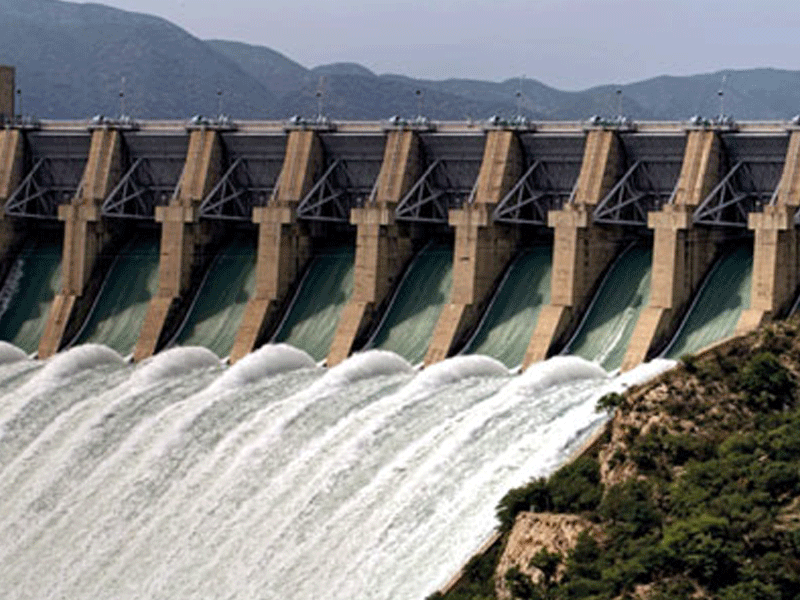Time to expedite work on new Dams

- 197
- 0
The Diamer Bhasha Dam project to store water and generate electricity on the Indus River between Kohistan in Khyber Pakhtunkhwa and Diamer districts of Gilgit-Baltistan, the cornerstone of which due to difficulties in acquiring required funds and land, as well as delays in the process of planning and clearing objections, was laid three times in 1998, 2008 and 2020. However, it finally reached the signing of an agreement between a Chinese company and the Pakistan Frontier Works Organization on 13 May 2020 in light of Supreme Court orders. In light of the revised target, the project is to be completed by 2028.
In recent days, there has been a major progress in the construction work, which will divert the river Indus before the end of this month, paving the way for the concrete work.
The next five years are very important in terms of achieving the set target. Bhasha Dam will be able to store 8.1 million acres of water and will get 4500 megawatts of the cheapest electricity. Scientists are deeply concerned about the current and especially the upcoming weather conditions in South Asia.
There is a serious problem of water crisis. They are insisting on building more dams to deal with possible situations. Apart from Mangala, Tarbela and Warsak, there are a total of 1007 other medium and small dams in the country, while among the mega projects under construction, Dasu Project after Bhasha is set to be completed by 2025 and Mohmand Dam is set to be completed by 2024. After the completion of the mentioned projects, the country will get rid of very expensive resources like oil and gas to a large extent, but in the future, it is inevitable to ensure dependence on solar, wind and coal resources to deal with the possible challenges of population growth.
As the world resources are on the decline, Pakistan is also faced with the dilemma. However, in the case of Pakistan, it’s water which is taking the central stage as water is an existential threat to our country, which is facing a huge crisis of fifty per cent shortage of water which is unprecedented in nature. In fact, we are faced with strange dilemma since 2010. Either there are floods or too little rains to meet our requirements, due to which we either face droughts or floods.
Among the most serious crises that Pakistan is currently facing, after the challenges and threats to national security, the most important one is the water problem. Historically, water shortages and shortages started when the dispute over the ownership of the rivers coming from India arose after partition, but the incompetence of our leadership only confused the problem rather than solving it. And today the situation is that 70 years ago, the amount of 5000 cubic meters of water per person for each Pakistani has reduced to just 1000, while due to this shortage, the conflict between the provinces has started once again. Although there are many reasons for this crisis, India's stubbornness has also played a big role in bringing the situation to the current level.
Despite sitting on the negotiation table with the Indian leadership repeatedly to solve the water problem, there are mutual differences. Instead of ameliorating the causes of Indian stubbornness, they continued to lead to more tension and all the efforts made so far in this regard have been met with failure, even as India has violated all agreements where Pakistan is part of. It began to forcefully use water and started building dams on the rivers owned by Pakistan, fueling a conflict that could become a precursor to the fourth war between the two nuclear powers. Around the world, where experts are expressing fears of the future world war over the issue of water, in South Asia, the dispute over the ownership and distribution of water between India and Pakistan is also being considered extremely dangerous. Due to lack of water, where the peace of the region is at risk, the agriculture of Pakistan, which is the basis of our economy, is also heading towards destruction and the region which was considered to be the most fertile in terms of agriculture in the world is facing water shortage.
The cause is becoming barren. According to the Indus Basin Agreement of 1960, which is the guarantor of the World Bank, Great Britain, Germany, Australia, New Zealand and Canada, both Pakistan and India have been given the right of ownership over the waters of three rivers. According to the agreement, Sutlej, Beas and Ravi are part of India while Chenab, Jhelum and Sindh are part of Pakistan, but despite this the conflict could not end, India ignored all the terms and promises on Chenab river which is part of Pakistan.
Pakistan announced the construction of Baglihar Dam to complete the 450 MW power generation project, after which the already existing conflict between the two countries became more intense. The water shortage is a killer for agriculture, while at the same time it is also a cause of aggravation of the energy crisis in the country.
As a matter of fact, the entire world is faced with the decreasing resources of water.
According to the United Nations report, the water shortage is increasing in the world. According to the new research of the World Food and Agriculture Organization, 23 acres of land around the world is becoming barren every minute due to the lack of water. The increase in global temperature and The agricultural sector is facing serious threats due to the increasing problems of water shortage, 80% of the area in Pakistan is affected by water shortage.
Due to the lack of water reservoirs and the addition of industrial and urban polluted water to the rivers, the aquatic life is severely damaged. In addition, agricultural production is also affected. According to the report, the world's water resources are being polluted in a destructive way. The available water is currently being used up by 45% annually and two-thirds of it is used for agricultural purposes. By the year 2025, this consumption will be 70% and if consumption in developing countries reaches the level of developed countries, it will be 90%. Many countries are already using water very badly. In China, South Asia (Pakistan, India, Bangladesh, etc.) and some countries in Latin America, the groundwater level drops by about one meter every year.
Experts say that full utilization of water resources and careful use of water is very important in order to control problems such as water scarcity, desertification of land and increase in deserts in the future. Caution is necessary in the use of water, however, to save water scarcity and lands from becoming barren and desertified, Pakistan must restore water.
Published in The Daily National Courier, November, 22 2023
Like Business on Facebook, follow @DailyNCourier on Twitter to stay informed and join in the conversation.

















































